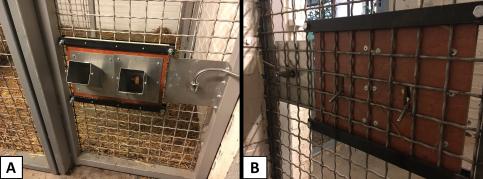Method

I tested three adult western chimpanzees (Pan troglodytes verus) in a two bottle preference test of short duration. This means that the carbohydrates were sovled in water and the chimpanzees were allowed to drink for 1 min from a pair of simultaneously presented graduated cylinders with metal drinking spouts, or until one of the bottles was emptied. Each bottle contained 100 ml of liquid and the consumption of liquid from each of the two bottles was recorded by weighing them before and after each test. In order to avoid distraction from or competition between conspecifics, the animals were tested individually, but simultaneously, at three different drinking stations within the enclosure.
In the relative taste preference test, each of the two bottles contained one of the five carbohydrates (sucrose, fructose, glucose, maltose or lactose) at equimolar concentrations. All ten possible binary combinations of two carbohydrates (e.g. sucrose vs fructose, fructose vs lactose) were tested. Each of the ten stimulus combinations were presented for a total of ten times per animal. Additionally, to assess whether preference for a given carbohydrate was stable at different concentration levels, three different test series were performed at concentrations of 100 mM, 200 mM and 400 mM, respectively.
In the taste difference threshold test, one of the bottles always contained a reference concentration of sucrose of either 100 mM or 200 mM. The reference concentration was always tested against a lower concentration of sucrose, until the animals did not display a preference for the higher concentration of sucrose anymore (e.g. 100 mM vs 20 mM, 100 vs 90 mM or 200 mM vs 20 mM, 200 vs 150 mM). Here, too, each stimulus combination was presented for a total of ten times per animal.
In both experiments, the position of the stimuli was pseudo-randomized in order to counterbalance possible position preferences. However, within each stimulus combination each carbohydrate was presented five times on either the right or the left side, to avoid side preference. After each test the bottles were rinsed with warm water before new liquid was added.
Responsible for this page:
Director of undergraduate studies Biology
Last updated:
05/17/18
